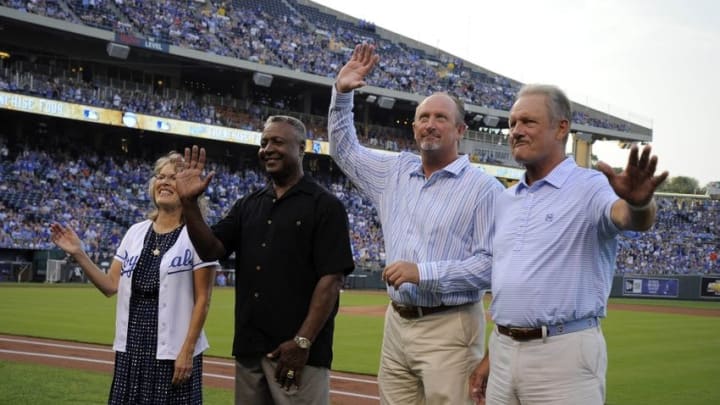
1. The Pine Tar Game
As this is a list of Brett’s most memorable moments in his career, as opposed to a list of his greatest accomplishments, such moments as his three home runs off Ron Guidry in the 1978 ALCS and being inducted into the Hall of Fame did not make the list. Instead, these are the moments that Brett is remembered for, and if there is one image of George Brett in the minds of baseball fans, it may well be this moment.
On July 24, 1983, George Brett hit what appeared to be a go-ahead home run off of Goose Gossage in the top of the ninth inning. As Brett circled the bases, manager Billy Martin came out of the dugout, arguing that Brett’s bat was illegal due to the amount of pine tar on the handle. He was able to get Tim McClelland to call Brett out for the illegal bat, negating the home run and preserving the Yankees lead.
Needless to say, Brett did not agree with the call, and proceeded to let McClelland know
in a calm, polite manner
by charging the field and looking as though he was about to commit homicide at home plate in Yankee Stadium. Brett was kept from attacking McClelland by the rest of the crew, and the Kansas City Royals played the remainder of the game under protest.
Eventually, American League President Lee McPhail reversed the decision, allowing Brett’s home run to stand and making the teams play the game over from that point. Martin, who was not exactly known for agreeing with umpires at any point in time, was enraged that the one decision he agreed with was overturned, and showed his displeasure by putting Don Mattingly at second and Ron Guidry in center when the game resumed.
Next: Royals potential breakout prospects
It may not be a highlight in the classic sense of the term, but if there is one moment that George Brett is remembered for during his Kansas City Royals career, it was the time when he went apoplectic in Yankee Stadium and had to be held back from attacking an umpire.
